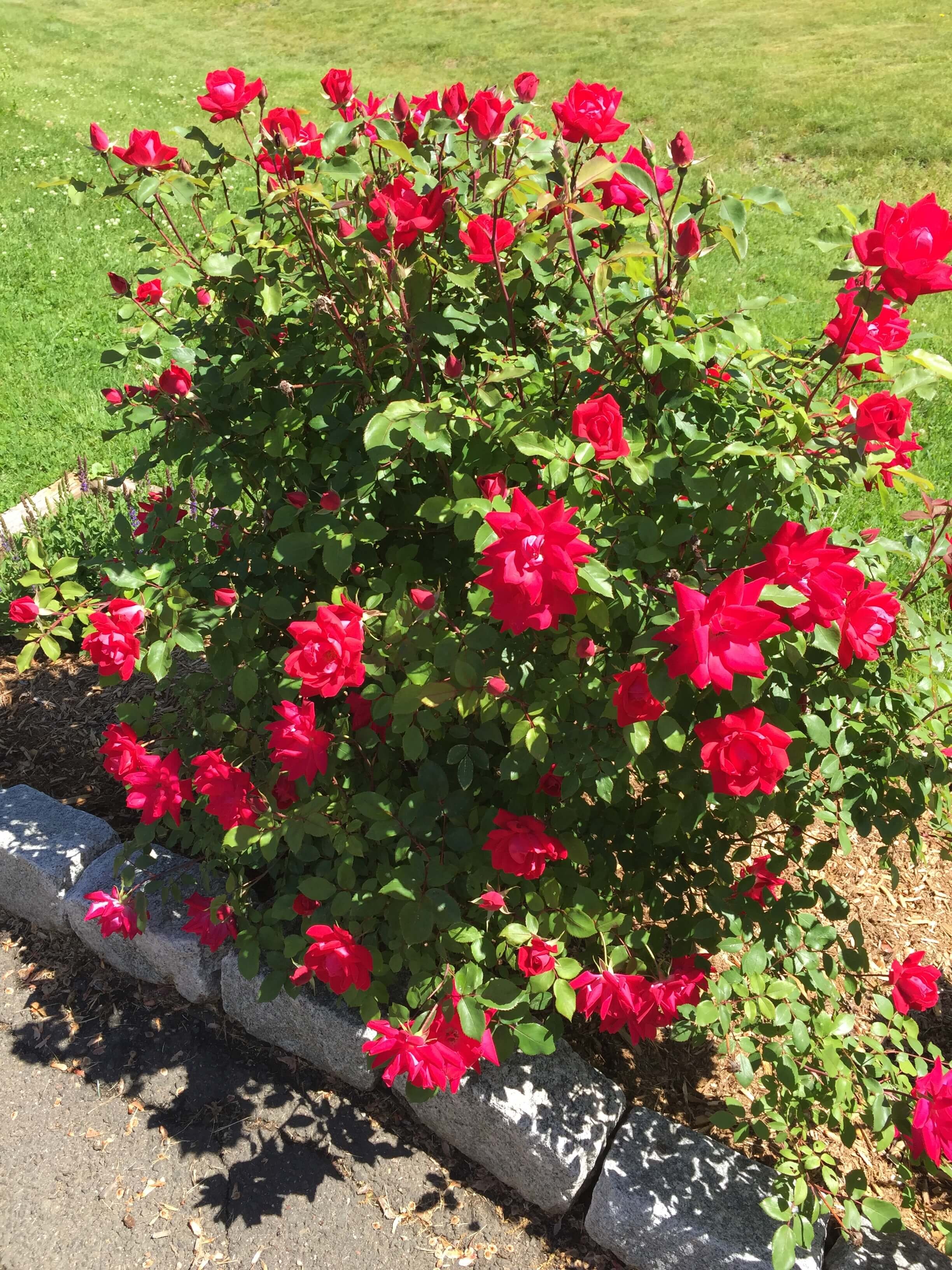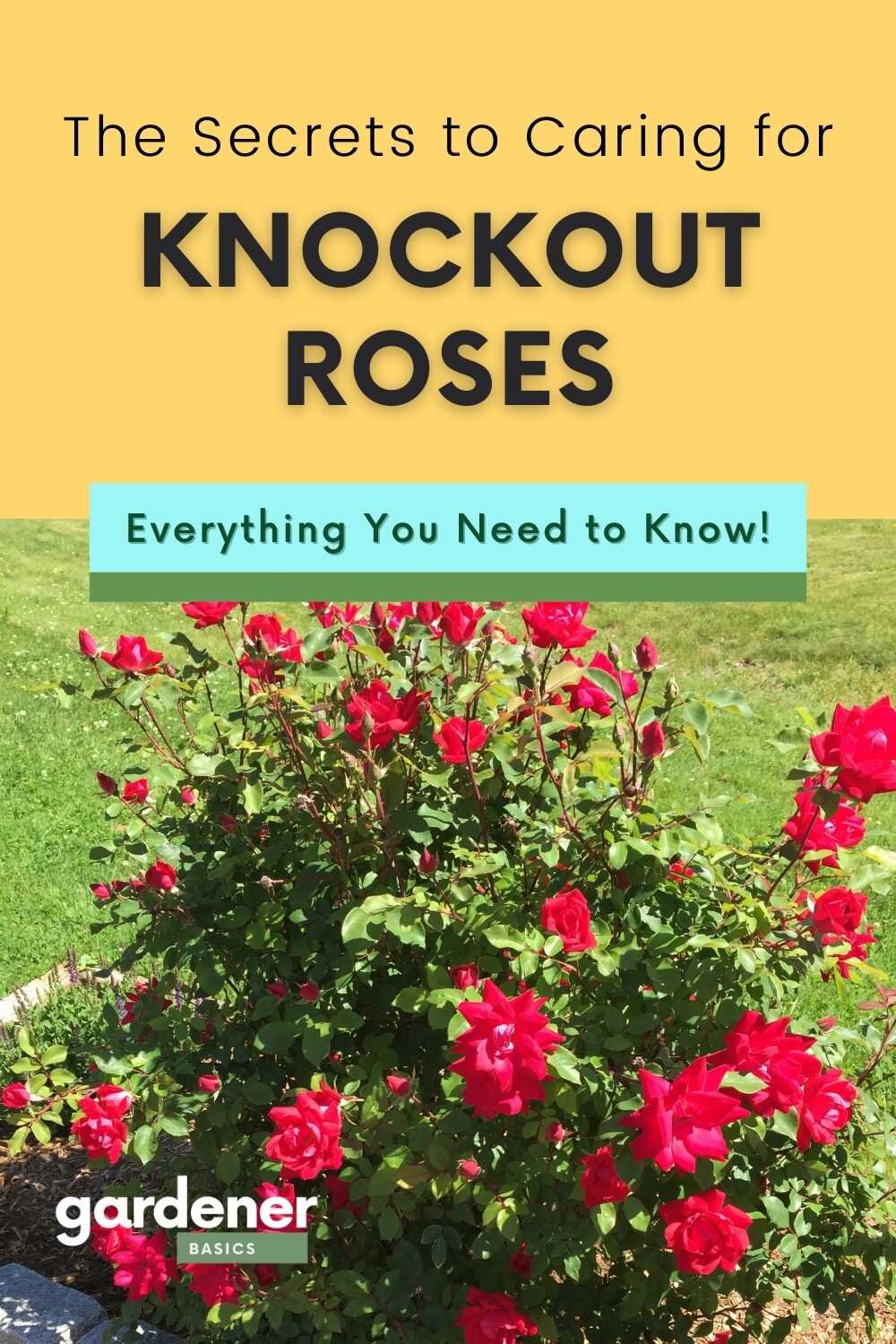The Secret to Caring For Knockout Roses
Knockout Rose Care
Knockout roses are beautiful flowers that can be grown in many different climates and environments. They're also among the easiest to grow, with many of them being hardy enough to survive without any special attention at all!
The secret to caring for knockout roses is understanding their growing habits so you can provide them with what they need.
Let's take a look at what it takes to grow these beautiful rose bushes in your home garden or backyard.
You'll find everything you need about how to care for knockout roses right here, from how often you should water your plants, when you should fertilize them, how much sun they like best, and more! We've got tips on pruning, too, because no one wants an overgrown bush!
The items listed are accompanied by affiliate links, meaning I earn a small commission if a purchase is made through my links. This has no impact on the cost to the consumer. I link to products this way whenever possible, and it has no bearing on the products I choose to review or recommend.
What are Knockout Roses?
Will Radler created the Knock Out rose. He developed a new rose that was resistant to black spot, a common disease that plagues most roses and makes them hard to grow.
He created this type of rose by cross-breeding to get a new disease-resistant rose. The result is an incredibly beautiful and colorful rose that's almost guaranteed to thrive in your garden!
The Knockout roses we have today are very much like the original roses that were created by Mr. Radler, however, the original version didn't come in a ton of different colors.
These new versions are created by using a process that involves locking the color genes onto the gene for disease resistance, creating plants that not only resist disease but also have unique and beautiful color patterns!
This means you can grow an incredibly diverse garden filled with gorgeous flowers.
Knockout roses are popular because they're so easy to grow and maintain, they have beautiful blooms that last for a long time without any kind of special care, and they have a great fragrance.
“There are double and single flowered knockout roses.”
Popular Varieties of Knockout Roses
There are several varieties of knockout roses, most of which were bred by Will Radler, including:
The Original Knock Out- known to be black spot resistant, they have either hot pink or cherry red single flowers, only involve easy care.
Double Knock Out- has double red flowers and looks more like the traditional rose, and it has a sweet and fruity smell.
Pink Knock Out- it has bright pink single flowers and a lot of the properties of the original Knock Out.
Pink Double Knock Out- Bright pink double flowers that are drought tolerant.
Blushing Knock Out- Single, light pink flowers that fade over time to a very soft pink.
Rainbow Knock Out- is more compact and has a mix of coral/pink flowers with yellow centers.
Sunny Knock Out- is one of the most popular due to its citrus fragrance. The flowers are yellow to cream in color.
Coral Knock Out- these roses start out red and fade to coral, and they have a slightly clean aroma.
Peachy Knock Out - they look peachy due to their pink petals and yellow centers.
White Knock Out- these are white with a light floral scent and dark green leaves.
Petite Knock Out- in a bright red color, these miniature roses are easy to care for and are great for pots.
There are many varieties of knockout roses that you can add to your garden.
How to Care for Knockout Roses
Caring for knockout roses is easy! That is why these roses are so beloved!
The best thing to do is learn all about how to care for knockout roses so you can grow your own gorgeous garden full of these beautiful plants.
Let's take a look at some of the important things you'll need to know to care for these roses.
Sunny Knockout Roses
Knockout roses are some of the most beautiful flowers and they are so easy to care for and maintain.
Soil Requirements
Knockout roses prefer to be planted in soil that has a pH level of 5.5 and 6.5, without being either acidic or alkaline. They also like well-drained soil that is rich in organic matter.
Sunlight Requirements
Most knockout roses like full sun and do best with 6-8 hours of sunlight. How much light you give your roses will affect how quickly they grow and their overall health. The more sun the better!
Knockout roses in full bloom in my yard.
Upclose view of my knockout roses after a rainstorm had passed by.
Watering Requirements
The Knockout roses really only need to be watered when the soil is dry.
How often you water depends on how hot and humid your area is.
How long to wait until watering again depends on how much rain or irrigation you get as well, so make sure they're always at least slightly moist, but don't let them get dried out.
They prefer deep watering less frequently. When watering knockout roses, make sure to water at the roots of the plant, not on the leaves. This will help to prevent fungal growth.
It also helps if you mulch around your plants to help keep the moisture in.
Fertilizer Requirements
Most knockout roses don't need to be fertilized, but I find that it gives them a nice boost.
How much fertilizer to use depends on the brand of fertilizer as well as what nutrients it provides.
I recommend a fertilizer that is specifically formulated for roses such as the Espoma Rose Tone ( I personally use it on my knockout roses and the blooms have been sensational).
Follow the directions on the company's packaging for application amounts and methods.
Be aware that over-application is just as bad as an inadequate application in many cases.
It is important to know when to fertilize knockout roses. You don't want to fertilize until after your first bloom cycle. This allows the plant to establish its roots and get established in the soil.
When applying fertilizer make sure the soil is moist and you apply it to the ground around the plant, never to the leaves or stems of the plant because this can burn the plants and even cause them to die!
Late in the summer is not a good time to fertilize roses. This is because this will cause them to grow new shoots that will die off with the first hard frost.
Pruning Knockout Roses
Using the proper pruning techniques will help keep your knockout roses looking great and healthy.
Make sure you understand when and how to prune knockout roses so that you don't accidentally damage or kill the plant.
I recommend following The 1/3 Rule. As a general rule when pruning knockout roses, you should always make sure that you're not removing more than one-third of the entire plant- even when it's in bloom.
This means that if you have a 9-foot tall plant, you should cut back the growth to 6 feet (the 1/3).
It is best to do this in early spring before new growth occurs and their first bloom cycle.
How you prune your plants will depend on what shapes or sizes you prefer and how much upkeep you want to put into them.
In later winter/early spring you will want to do a hard trim. Cut out all dead sections of growth and then cut the remaining area back (just remember that the more you take it back the smaller it will be the next year and may take several years to be the size you want).
I tend to be more conservative on my pruning.
How To Prevent Disease and Pest Problems
Make sure to regularly check your plants for any pests or diseases. While they are disease resistant, they can still be susceptible to blackspot and powdery mildew!
To prevent fungal diseases, make sure to water the roots, not the leaves. Watering the leaves can cause fungus and mold to grow.
Make sure you prune off any leaves that become diseased or fall off. Also, cut out any canes that are affected, too.
How often you need to do this depends mostly on how warm and humid your area is for a while, but I recommend checking at least weekly.
Unfortunately, knockout roses are susceptible to Japanese beetles, sawflies, or Rose slugs.
While these critters aren't too harmful to the plants, they can be destructive to your gardens.
You can try picking off Japanese beetles with your hands and putting them in warm soapy water or you can also try treating your roses with insecticidal soap.
Winterizing
When the temperatures begin to drop lower than 50 degrees you should start preparing your knockout rose bushes for winter.
To prepare your knockout roses for winter you want to make sure they have a protective layer around them.
I recommend adding some mulch around the base of the plant. You can also wrap the rose bush in burlap.
When considering how to care for knockout roses during the winter, don't worry about snow. Snow acts as a blanket when it covers the plants and can help keep them warm.
FAQS About Caring For Knockout Roses
How big do knockout roses get?
Some sizes will get bigger than others, depending on the variety you plant and whether or not you cut them back. On average, if you trim them and maintain them, they can average 3-4' wide x 3-4' tall.
How long do knockout roses live?
Some will live longer than others, depending on when you purchased them. How long they'll live depends mainly on you and how well you take care of them, but if you keep up with things, then most will last for many years before needing to be replaced.
Should you deadhead knockout roses?
Yes, you should deadhead your knockout roses. Deadheading is when you prune off the old blossoms/flowers, allowing it to put more energy into producing new flowers. Check out this article on how to deadhead knockout roses.
When is the best time to fertilize a knockout rose?
We recommend fertilizing during the second bloom cycle in early spring, before bud set.
What is the best fertilizer for knockout roses?
Check out my post about the best rose fertilizers, where I go into detail about the different types.
What zones do knockout roses grow well in?
They will grow best in zones 5-9.
Can you grow knockout roses in containers?
Yes, you can grow knockout roses in containers. You'll want to make sure that they are planted in a large enough pot since they will grow bigger than most varieties of roses. How to care for knockout roses in pots is better suited for its own post, so make sure to read it by clicking the link above.
How to care for double knockout roses?
You'll want to provide the same care as if it were a single knockout rose.
When is the best time to plant knockout roses?
The best time to plant knockout roses is in fall or spring.
Can you transplant knockout roses?
Yes, you can transplant knockout roses. It is recommended that if you are going to be transplanting knockout roses that you should do this in late winter or early spring.
Knockout Roses Care and Maintenance
This is a comprehensive guide to caring for knockout roses. It covers everything roses need from soil requirements and sunlight needs to watering frequency, fertilizing schedule, pruning tips, and winter care instructions.
Again, we hope that these rose care tips have been helpful in giving you some more information about how best to take care of your vibrant blooms.
Pin for Later>>>

















